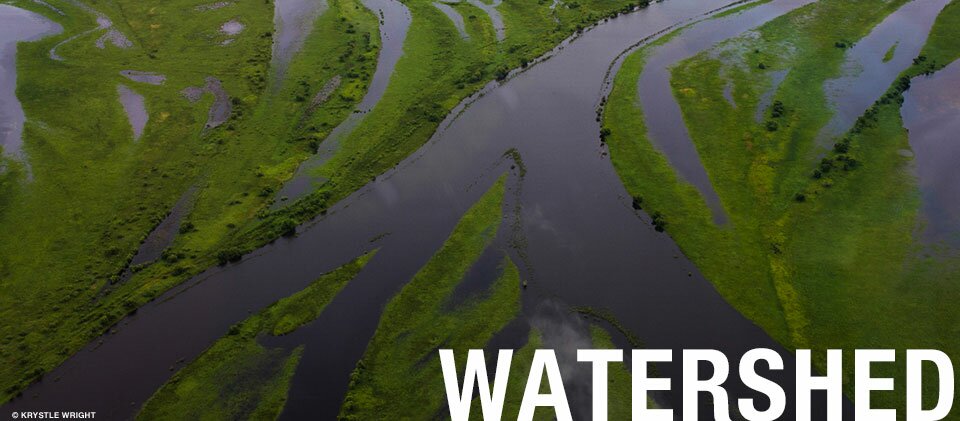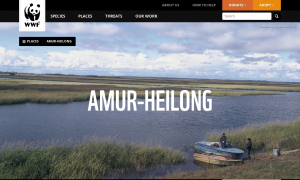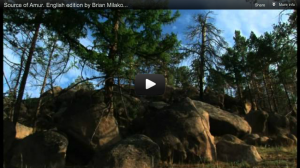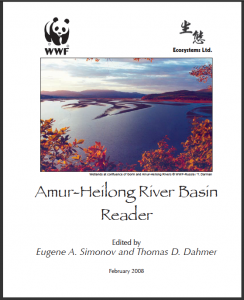
Geography
The Amur River, also called the Heilong, is the single longest undammed river in the eastern hemisphere and boasts a 380 million acre watershed. It is also the only west-east flowing river in Siberia. It originates in the Khan Khentii wilderness near the sacred mountain Burkan Khaldun, the birthplace of Genghis Khan. It flows east through the Mongolian Steppe and eventually entering Russia.
It continues on to flow along nearly 1,000 kilometers of the Russian-Chinese border, meandering through temperate forests and many remote villages that harken back to Soviet Era. It then heads north for a brief stint through Russia before dumping into the Sea of Okhotsk. The aerial view of the Amur-Heilong, seen above, is striking because it illustrates the impressive number and size of oxbows it contains as it meanders to the sea – making navigation tricky for our expedition.
Biodiversity
The Amur-Heilong traverses an incredible diversity of ecosystems including one of the most biologically diverse temperate forests in the world, expansive steppe grasslands, and the taiga biome – the largest of its kind in the world. These ecosystems support a remarkable variety of species. The Russian side alone is home to approximately 2,800 plant and 500 animal species. They also provides critical habitat for species on the brink of extinction–most notably the Amur Tiger and Amur Leopard.
Wetlands provide important sanctuary for migratory waterfowl, including Red Crown Cranes and Oriental White Storks. Musk deer and brown bear make their home in the old-growth deciduous and coniferous forests. Wild Ginseng, prized for it’s healing properties, is found in the Russian Far East. And the river itself hosts the largest Salmonid fish, the beautiful Taimen, and the supposed largest freshwater fish in the world, the Kaluga Sturgeon.
Global Importance
The Amur-Heilong watershed, while widely unknown, has incredible global importance for one major reason: it is one of the few great free flowing rivers left on the planet. It has no dams and only two major bridges along its entire length. The scale of the free flowing Amur waters is nearly incomprehensible in a world where greater than 60% of our large rivers and nearly all rivers this massive are dammed.
This makes the Amur a world treasure as well as a crucial baseline for the management of all large rivers. As one of the few rivers with a clean slate, it could become a model for sound management of water resources worldwide.
Threats
The biggest threats to the Amur Heilong watershed is habitat destruction, illegal wildlife trade, pollution, and resource extraction driven by a global appetite for these resources.
Learn more…
 WWF Amur-Heilong Campaign – A campaign to protect the habitat and the incredible species diversity in the Amur-Heilong Watershed.
WWF Amur-Heilong Campaign – A campaign to protect the habitat and the incredible species diversity in the Amur-Heilong Watershed.
 Source of the Amur - A short film on the Amur watershed, its challenges, and its treasures. By Brian Milakovsky.
Source of the Amur - A short film on the Amur watershed, its challenges, and its treasures. By Brian Milakovsky.

Amur-Heilong River Basin Reader -The most extensive scientific document on the Amur watershed compiled by the World Wildlife Fund in Russia.




